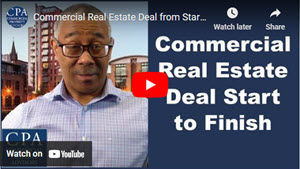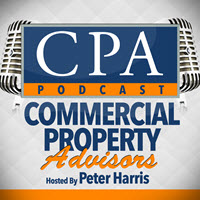
Would you like to purchase commercial property, but don’t have the money for a down payment? Are you cash poor but have equity in a property? Can you use that equity to purchase commercial real estate?
The answer is, YES! In this post you will discover how to unleash your HELOC power to purchase commercial real estate! I will show you:
- How to use your property’s equity using your Home Equity Line of Credit to buy commercial property.
- Four questions to ask when considering a HELOC to ensure the numbers make sense.
- When it is a bad idea to use your property’s equity to purchase commercial property.
Calculating Property Equity
When considering a HELOC Loan, you must first calculate how much equity you have in your home. This is done by simply subtracting the amount owing from the property value.
Example Property: A single-family home that is valued at $500,000 with $100,000 still owing on the mortgage has $400,000 in equity. Remember, what the property is worth minus what you owe equals your equity.
Calculating Your HELOC
When getting a loan from the bank to purchase a house, the bank requires you to put down 25%. So, if you were to purchase a house for $100,000, the bank would require a down payment of $25,000 and give a loan for $75,000. This is what is called a loan-to-value of 75%. The same concept applies to a HELOC.
Let’s look at our example property. It has $400,000 in equity. How do we access that equity so we can start using it? Here are the steps to calculating your HELOC:
- The property is valued at $500,000
- Just like when purchasing a new home, the lender will give a loan for 75% of the value, which is $375,000.
- Next, subtract from that the $100,000 that is still owing on the mortgage.
- The remainder is $275,000.
This $275,000 is your HELOC; the cash that you can use and the source of your down payments. The bank isn’t going to give you the entire $400,000 in equity because they want to ensure they are protected and that there is still equity remaining.
As soon as the HELOC closes, you will receive a check book to begin writing checks against the $275,000.
How to Unleash Your HELOC Power to Purchase a Commercial Property
Below I will outline a deal that will show you how to use your HELOC to purchase commercial property.
HELOC Payments: A loan using the entire $275,000 with 5% interest, amortized over 30 years, results in HELOC payments of $1,476 a month.
Property: A 16-unit apartment building purchased for a million dollars with a down payment of 25%, which is $250,000.
Mortgage: The loan is $750,000 at a 5% interest rate, amortized over 25 years. Therefore, my payments are $4,384 per month. To get a yearly figure, I multiply by 12 which equals $52,608 per year.
Income: Each of the 16 units brings in $800 a month, which is $153,600 per year. To accommodate for future vacancy, I’m going to subtract 5% from this number. This equals a yearly income of $145,920.
Expenses: Based on my own experience, I allow for 40% of the effective gross income as expenses. I multiply 40% into my income of $145,920, which equals $58,368 per year in expenses.
Net Operating Income: Income minus expenses equals the NOI. $145,920 minus $58,368 equals an NOI of $87,552.
Calculating Cash flow: The NOI minus my mortgage equals my cash flow, which is $34,944 per year. Divided by 12, it equals a cashflow of $2,912 per month.
Four Questions to Ask When Considering HELOC
This brings us to the four most important questions that you need to ask yourself if you are considering a HELOC to purchase commercial property.
- Does the deal cover the HELOC cost?
- Is there a cash flow left over after covering the cost?
- What’s the exit strategy if I only have one property with equity?
- What are the next steps?
1. Does the deal cover the HELOC cost?
In my example deal the cash flow of $2,912 per month covers the HELOC cost of $1,476.
2. Is There Cash Flow Left Over?
Subtracting my HELOC cost of $1,476 from my cash flow of $2,912 leaves me a remaining cash flow of $1,400. After paying the mortgage on the property and the HELOC there plenty of cash leftover. This is very important.
3. What is the Exit Strategy?
If you only have one property with equity, but you want to buy multiple commercial properties, what do you do? The answer is simple. As you increase your NOI, you increase your property value which allows you to do a cash-out refi and pull out cash.
The goal is to increase the NOI by increasing the rents over time. It may take several years to increase the property value to a point where you can do a cash-out refi to pay off what is remaining in a HELOC.
4. What Are the Next Steps?
After increasing the NOI and the property value, doing a cash-out refi on the property and paying off your HELOC, you can then repeat the process. You can get a larger HELOC on your single-family home, and then do this over again with a larger property.
Two Reasons Not to Use Your HELOC to Purchase a Commercial Property
1. Not Enough Cash Flow
Do not use a HELOC when there is not enough cash flow from your deal to pay the HELOC payments. My example property had enough cash flow to pay the HELOC cost and have plenty of cash flow leftover. However, I don’t advise you do a deal where the cash flow does not cover the HELOC payments.
2. You Don’t Know What You’re Doing
It is a bad idea to use your HELOC when you don’t know what you’re doing. Save your HELOC because the equity in your property can be used for your retirement or you kid’s college fund. Don’t waste it. Instead, what you need to do is get educated. Get expert help or call us.
If you do, in fact, get a HELOC and use it to buy commercial property, watching these two videos will put you in a good position to make sound business decisions.
7 Commercial Real Estate Terms You Should Know
This is an important video. Learning these terms will help you make great business decisions moving forward with commercial deals.
How to Buy Your First Small Apartment Building
In this video I go through how to find and evaluate your first multi-family complex. I outline what key terms you’re going to use, and what they mean to you.



